 - K-1 has its most successful year yet, with sold-out tournaments including the "K-1 All-Stars" nights and "K-1 Spirits" series taking the action to fans throughout Japan. The year is capped at another sold-out Tokyo Dome Grand Prix when Ernesto Hoost, the man they call "Mr. Perfect," wins a thrilling final against Mirko "Crocop" Filipovic to capture the K-1 Championship.
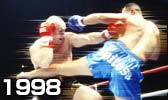 - The Swiss event is renamed the K-1 European Grand Prix, with winner Stefan Lefko earning a berth in the December K-1 Grand Prix at Tokyo Dome. Similarly, Rick Roufus grabs a GP spot by winning the new K-1 USA Grand Prix, held in August at the Mirage Hotel in Las Vegas. In the Japan GP, held the same month, it is Satake who advances to the Tokyo Dome Grand Prix Finals, which attract 63, 800 fans and are won by Peter Aerts, K-1's first three-time champion.
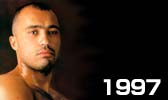 - K-1 fighters like Hug, Bernardo, and Aerts are now major celebrities in Japan, appearing on television and being mobbed by fans in the street. Hug's Fight Night is broadcast on Swiss national television. In Japan, K-1 holds events in the domed stadiums of the country's three largest cities, Nagoya, Osaka, and Tokyo. More than 45,000 tickets for the Tokyo Dome Grand Prix sell out in less than an hour. This year, Ernesto Hoost defeats Hug by decision to capture the crown. Television ratings for the tournament hit a surprisingly high 20% viewer share. K-1 is now the hottest sport in Japan.
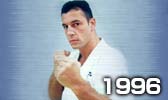 - Newcomer Mike Bernardo upsets Aerts in the K-1 Grand Prix, then loses in the final to Hug, who takes a bigger Fight Night production back to Switzerland this year. In August, a K-1 video game is released for the Sony PlayStation platform, while in October the nation-wide Fuji TV Network broadcasts the Yokohama Arena K-1 Star Wars event. This marks the beginning of Fuji's association with K-1.
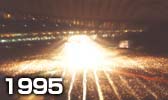 - Aerts successfully defends his title at the 3rd K-1 Grand Prix in May. The following month, Hug's native Switzerland hosts K-1 Fight Night, the rapidly growing sport's first overseas event. More than 12,000 people watch favorite Hug win by knockout over WKA USA Champion Dennis Lane.
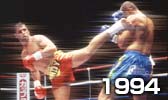 - Peter Aerts wins the second K-1 Grand Prix, with newcomer Andy Hug losing in his first match. In September, Hug wins a 'revenge' bout at the Yokohama arena, and establishes himself as one of K-1's first superstars.
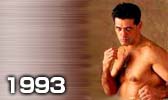 - With karate moving closer to kickboxing in style, Ishii organizes the first K-1 Grand Prix at the Yoyogi Dai-Ichi Stadium in Tokyo. The event is held in a regulation-size boxing ring under the revolutionary K-1 rules, which permit punches to accommodate both karate and kickboxing fighters. A sellout crowd of 10,000 sees Branco Citatic win the first K-1 Championship. Two more K-1 events are held later in the year, and these are won by Satake and Ernesto Hoost.
- 1992
- The first glove karate event in Japan, the "Karate Japan Open," is held, and Satake wins it.
- 1991
- Following a series of successful tournaments, Seido Kaikan comes to Tokyo for a tournament against USA Oyama Karate, in which Satake beats the legendary Willie Williams.
- 1988
- Two of Ishii's students, Toshiyuki Yanagisawa and Masaaki Satake, finish 1st and 2nd in the Karate Real Champion Tournament, earning Ishii's Seido Kaikan respect in the martial arts community.
- 1985
- Seido Kaikan opens an office in the United States with Tom Edwards as its manager.
- 1983
- Seido Kaikan fighters square off against a group of Kung fu experts at the Queen Elizabeth Stadium in Kansai and win the contest. Meanwhile, Ishii becomes the first Chairman of the newly formed "All Japan Budo (Martial Arts) Promotion Association," an organization made up of Kansai-area karate and kenpo groups.
- 1982
- The first All Japan Karate-Do Tournament is held in Osaka, organized by Ishii and Seido Kaikan, the new governing body for Seidokan Karate. The full-contact competition fills the Furitsu Gymnasium and is broadcast on local television.
- 1980
- Kazuyoshi Ishii establishes the Seidokan Karate school in Osaka, with dojos and university-based karate clubs in the Kansai area.
|